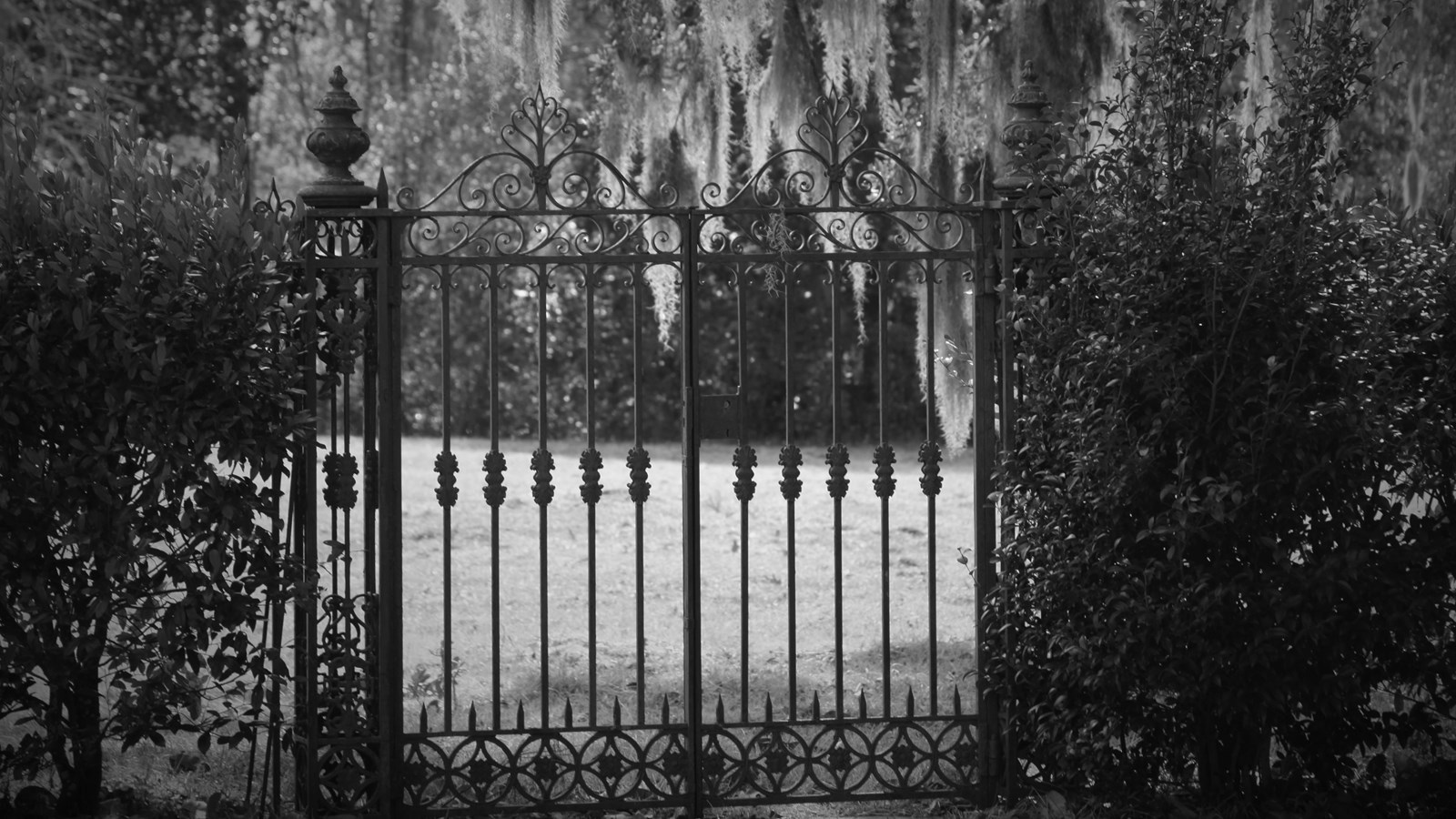Last updated: June 10, 2021
Place
Stop 6 Melrose Orchard Gate

NPS
Cellular Signal, Historical/Interpretive Information/Exhibits, Scenic View/Photo Spot
Fruit trees grew abundantly on estates around Natchez. Fruit was also brought in from area plantations. Canning fruit was a major task for the enslaved kitchen servants in the summer months, overseen by the mistress of the estate or plantation. In 1850 John McMurran received a dozen small peach trees. His law partner, John Quitman, provided them for the Melrose orchard. Today, the orchard holds figs, peaches, pears, apples, and cherries, just as it did during the McMurran era. Cattle grazed around the trees to keep the grass down. The McMurrans also grew peaches and nectarines at their Louisiana plantations, Killarney and Moro.
George and Ethel Kelly installed the iron gate at the orchard entrance. It came from Cherokee, a house they owned in downtown Natchez.
The wooded area on the far side of the orchard holds a cemetery. The McMurrans buried their enslaved servants there. They planted evergreen trees like cedar around the area. In 1844 a young woman named Laura became the first burial. She had “quite a large funeral.” Marice died of dysentery in 1861. Wesley died in 1853. The carriage driver Charles died in 1855. Today, there is no above-ground evidence of the cemetery remaining. However, a letter written in 1887 mentioned a brick wall surrounding the Melrose graveyard.
